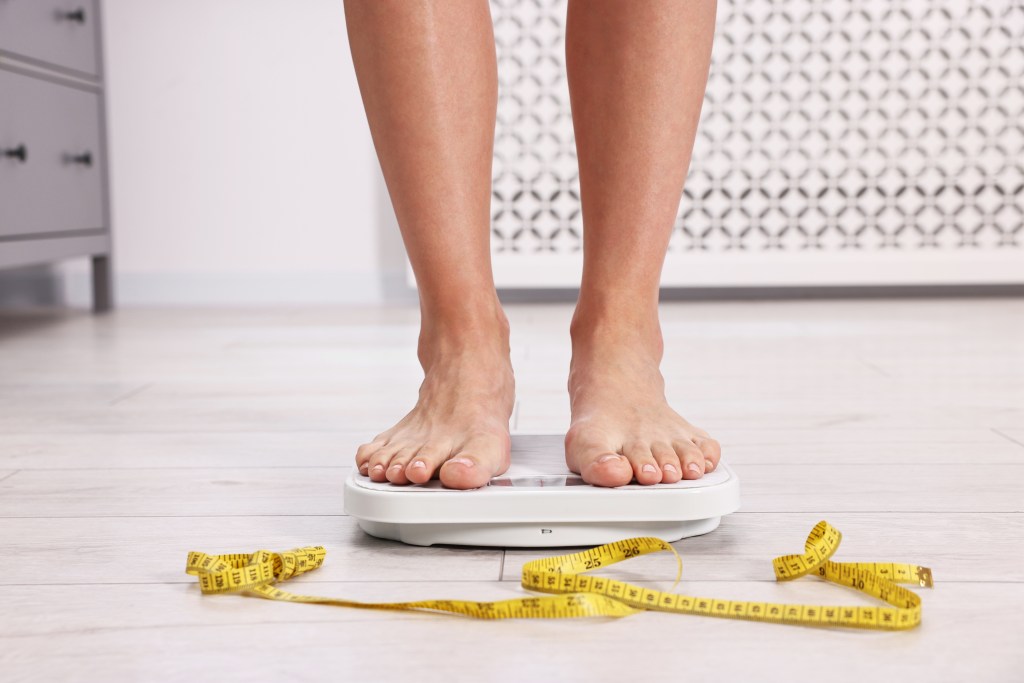At a glance
Autophagy and ketosis are closely related processes that support energy balance and cellular renewal in different ways. Autophagy clears damaged components to maintain healthy cells, while ketosis provides a steady energy supply by using fat as fuel. Together, they help promote metabolic efficiency and overall vitality.
Autophagy vs. ketosis-what’s the difference? Autophagy is a cellular renewal process that activates the body’s ability to recycle damaged proteins and cellular organelles.
In contrast, ketosis is a metabolic state of fat burning in which the body uses ketones generated during fat breakdown instead of sugars to generate energy.
Discover the key differences and health benefits of autophagy and ketosis, and learn how to use these physiological states to promote a healthy body.
What is autophagy?
Autophagy is a survival mechanism that allows the body to use damaged cell components as a fuel source during extended periods of nutrient deprivation.
In addition to sustaining life, autophagy helps destroy harmful pathogens, such as infectious bacteria and viruses, and stimulates cellular renewal and apoptosis, which is the programmed death of dysfunctional cells.
Healthy cells are vital for the body to produce energy, regenerate, and obtain nutrients from food. However, aging, oxidative stress, and exposure to environmental toxins can damage or misfold proteins and cellular organelles, impairing the proper function of cells.
Abnormal cells can contribute to the development of cancer and other chronic conditions, including neurodegenerative disorders and cardiovascular disease.
Health benefits of autophagy
Although more research is needed to support inducing autophagy to optimize brain function, scientific findings are promising and link autophagy to protection from age-related neurodegenerative diseases such as Alzheimer’s.
A study published in Brain Pathology concluded, “…increasing evidence indicates dysregulated autophagy plays a key role in the pathogenesis of neurodegenerative diseases, and implies potential therapeutic strategies to ameliorate neurodegenerative diseases through regulating autophagy.”1
Additionally, autophagy may lower the risk of developing cancerous tumor cells by clearing cellular debris that can damage DNA and by removing malfunctioning mitochondria.
Autophagy can also strengthen immune defenses and help regulate inflammatory responses as it helps eliminate pathogenic microbes, parasites, viruses, and bacteria.

How to boost autophagy
Although autophagy occurs constantly in an attempt to repair and rejuvenate the body’s cells, there are strategies to significantly boost this critical process.
Calorie restriction through prolonged or intermittent fasting is the most efficient way to induce autophagy.
While individual responses may vary, autophagy typically kicks in between 24 and 48 hours of food deprivation, which forces the body to recycle dysfunctional cell components to function.
Additionally, hot and cold contrast therapy and high-intensity exercises, such as resistance training, have been shown to stimulate autophagy.
Evidence published in Autophagy found that exercise induces autophagy in the cerebral cortex, the part of the brain responsible for higher-level cognitive functions such as memory.2
Watch the video below to learn more about autophagy.
What is ketosis?
Ketosis is the metabolic state of fat-burning in which the metabolism switches from sugars and carbohydrates to stored and dietary fat to generate energy for cells.
Nutritional ketosis is primarily achieved through a ketogenic diet, which reduces dietary carbohydrates and forces the body to use an alternative fuel source called ketones.
Ketones, or ketone bodies, are a group of acids that circulate in the bloodstream and supply energy to cells.
Health benefits of ketosis
The ketogenic diet has been used for decades to manage epilepsy, likely due to ketones’ ability to cross the blood-brain barrier and provide a stable energy source to the central nervous system.
The effects of ketones on neuronal cells may also protect against neurodegeneration by reducing the accumulation of toxic protein aggregates in the brain.
In addition to its neuroprotective properties, ketosis is linked with profound metabolic benefits.
These include maintaining healthy blood sugar and insulin levels, which reduces the risk of impaired glucose metabolism, a primary cause of obesity and type 2 diabetes.
Research published in Medical Principles and Practice found that a low-carb ketogenic diet significantly improved hemoglobin A1C levels and lowered the intake of insulin and anti-diabetic drugs in patients with type 2 diabetes.3

Weight loss is another notable benefit of a keto diet. On a high-carb diet, blood sugar that isn’t immediately utilized for energy is stored as fat. This explains why maintaining ketosis helps deplete stored fat reserves to meet the body’s energy needs.
Ketosis may also support heart health by promoting arterial elasticity, increasing beneficial high-density lipoprotein (HDL) cholesterol, while lowering potentially harmful low-density lipoprotein (LDL) cholesterol over time.
In addition, a study published in Nutrients found that a very low-carbohydrate diet effectively lowered inflammation, blood pressure, and other cardiovascular disease risk factors.4

How to get into ketosis
A nutritious keto diet is the best strategy to trigger and maintain ketosis and is achieved by reducing dietary carbohydrate intake to below 50 net grams daily.
Protein is also limited to between three and six ounces per meal to avoid amino-acid-induced glucose production, which elevates blood sugar levels and inhibits ketone production.
A nutrient-dense low-carb diet, such as Healthy Keto®, is an ideal approach to harnessing the benefits of ketosis. This meal plan not only triggers fat-burning but also provides the body with essential nutrients it needs to perform at its best.
Intermittent fasting also deprives the body of glucose and depletes glycogen, a storage form of glucose. As a result, the liver begins burning fat and releases large amounts of ketones from fatty acids.

Autophagy vs. ketosis
While autophagy and ketosis play critical roles in immunity, cellular function, and metabolic balance, their processes are distinct.
Autophagy is a catabolic process, which means it’s involved in the degradation of damaged cellular components for energy metabolism.
Conversely, ketosis is a metabolic state during which ketones are used instead of glucose as an alternative energy source for cellular metabolism due to insufficient dietary carbohydrates.
Autophagy and ketosis share common signs, and both may promote satiety and hunger suppression, enhance cognitive function, and mitigate pain from inflammation.
You may also experience more youthful skin after periods of prolonged autophagy, as the body’s capacity to renew skin cells is enhanced.
Autophagy and ketosis can also be measured with an at-home blood, breath, or urine ketone test because ketones stimulate autophagy induction.
However, reliable data as to what ketone blood concentrations are required to induce significant autophagy are lacking, and these test results should only be used as a general reference.
Additional signs of ketosis include enhanced energy, rapid weight loss, and mood stability. Bad breath may also occur due to the release of acetone, one of the three primary ketones.

Advantages of combining autophagy and ketosis
Depleting blood sugar and glycogen stores promotes autophagy, which explains why following a ketogenic diet enhances its effects on the body.
“If you’re eating a tremendous amount of sugar and carbohydrates, it’s going to take longer to induce autophagy,” explains Dr. Berg. “Keto allows you to achieve autophagy quicker and enhances metabolic efficiency.”
Additionally, autophagy and keto can work synergistically to optimize the health and function of brain cells by protecting against degeneration and providing a more efficient fuel source.
Together, these biological processes can strengthen the body’s immune defences and lower the risk of certain health conditions and abnormal cell growth linked to cancer development.
Combining a ketogenic diet with prolonged fasting is one of the most effective ways to trigger significant periods of autophagy. This strategy combines the metabolic shift of ketosis with the nutrient deprivation signals of fasting, directly stimulating the body’s cellular recycling processes.
Key takeaways
- Autophagy and ketosis often occur under similar conditions but are distinct biological processes that help maintain cellular health and energy balance.
- Autophagy removes damaged or dysfunctional cell components, while ketosis converts fat into ketones for energy.
- Both support healthy metabolism, brain function, immune balance, and inflammation control.
- Extended fasting and carbohydrate restriction can activate both processes, promoting cellular repair and overall well-being.
FAQ
1. Autophagy vs. ketosis, which is better?
The better option depends on your health goals, as autophagy and ketosis are different biological processes. Ketosis may benefit those looking to lose weight, boost metabolic health, and enhance energy.
Conversely, those interested in promoting healthier cells and reducing the risk of age-related conditions may prefer autophagy. However, when combined, these biological processes can induce profound health advantages.
2. Is it possible to induce autophagy without entering ketosis?
Yes, autophagy is a constant cellular repair process that occurs regardless of your metabolic status.
However, inducing a deeper state of autophagy with methods such as a low-carb diet, prolonged fasting, or intense exercise will most likely also trigger ketosis by depleting glucose and glycogen reserves in the liver, forcing the body to produce ketones to generate energy.
3. How do you know you’re in autophagy?
Common signs of autophagy include ketones in the blood, a reduced appetite, and enhanced brain function. You may also experience more youthful skin as the body renews skin cells more efficiently.
4. How do you know you’re in ketosis?
Ketosis can be measured with blood, urine, or breath ketone tests. However, signs of ketosis can include better weight management, improved cognitive function, enhanced energy, and mood stability.
Sources
- https://pmc.ncbi.nlm.nih.gov/articles/PMC5739982/ ?
- https://pmc.ncbi.nlm.nih.gov/articles/PMC3463459/ ?
- https://pmc.ncbi.nlm.nih.gov/articles/PMC8280429/ ?
- https://pmc.ncbi.nlm.nih.gov/articles/PMC10421332/ ?

















